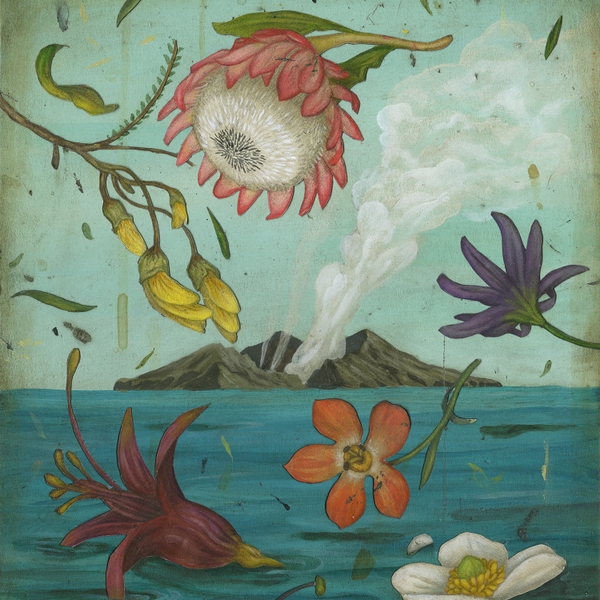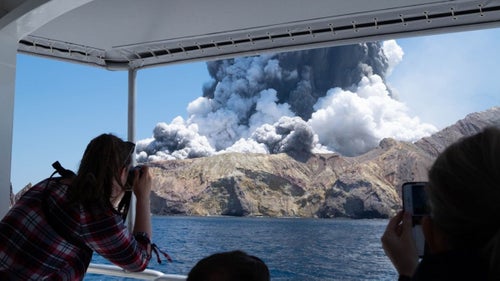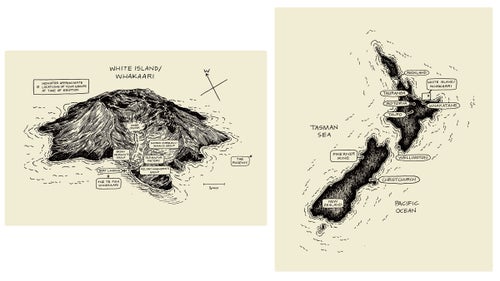The True Story of the White Island Eruption
Last December, around 100 tourists set out for New Zealand's Whakaari/White Island, where an active volcano has attracted hundreds of thousands of vacationers since the early 1990s. It was supposed to be a routine six-hour tour, including the highlight: a quick hike into the island's otherworldly caldera. Then the volcano exploded. What happened next reveals troubling questions about the risks we're willing to take when lives hang in the balance.
Heading out the door? Read this article on the Outside app available now on iOS devices for members! Download the app.
Part One
Later, everyone who saw White Island erupt would remark on how quiet it was, how magnificent, and how swift. At 2:10 P.M., nothing. At 2:11, a two-mile-high tower of steam. Fifty miles away on New Zealand’s North Island, a search and rescue helicopter crew returning to base watched, astonished, as a colossal mushroom unfurled on the horizon. “Oh, my God!” shouted the pilot. “We’ve just seen a volcano erupt!” Then, a shudder of dread. It was December 9, the summer season. The island would be packed with day-trippers.
Just inland from the island’s rocky southern beach, with four middle-aged German clients he had brought in by chopper an hour earlier, pilot Brian Depauw glanced around to see a mammoth cumulus silently fill the sky behind him, then “go vertical.” Off the island’s east coast, on the Phoenix with a few dozen other tourists, Brazilian Allessandro Kauffmann captured the moment on video. The clip shows a vast ball of cloud roll out of the crater, then, soundlessly and impossibly fast, swallow the island. The initial eruption is followed moments later by a second blast, a dark gray avalanche that shoots out horizontally, directly toward the camera. The color and texture indicate a mix of rock, ash, and acid gas, a superheated pyroclastic flow. Its focused direction suggests that the crater amphitheater, with its high sides and single exit through a collapsed southern wall, has acted like a cannon: the explosion bounced off the caldera’s back and sides and is barrelling out the opening. The force of the wave is awesome. “Huge smoke coming very quickly … getting massive so fast,” was how Kauffmann’s wife, Aline, described it to reporters.
Paul Kingi, crewing on the Phoenix, saw the blast drop down onto the sea and hurtle toward his boat. As he yelled at everyone to get inside, the boat’s skipper gunned south, then made a wide curve around to the west and north, sidestepping the ash cloud like a matador executing a pass.
In Crater Bay on the Phoenix’s sister ship, the Te Puia Whakaari, captain David Plews had no such chance. He was anchored in the path of a 60-mile-per-hour gas and rock tsunami. Already engulfed, or about to be, were his 42 passengers. Deep inside the crater, guide Hayden Marshall-Inman’s group of 21 had disappeared. Kelsey Waghorn’s group of 21, near the shore, were seconds from following them. Plews grabbed the ship’s radio. “Evacuate! Evacuate! Evacuate!” he shouted.
On land, Depauw heard the cries and saw what was about to happen. “Jump into the water!” he screamed at his guests. Depauw ran to the water’s edge and leapt. Two clients followed. The other two were unable to make the water in time. Depauw took a lungful of air as the black fog flew toward him. This is it, he thought. There’s no surviving this. Then he ducked.






